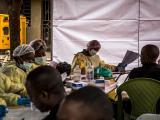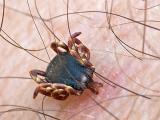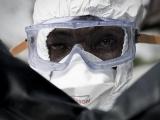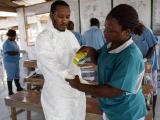Aug 17, 2012
Aerial spraying to fight West Nile begins in Dallas area
Aerial spraying in the Dallas area to battle mosquitoes that spread West Nile virus (WNV) began last night, but rain kept planes from spraying more than about half of the targeted acres, the Texas Department of State Health Services (TDSHS) said today. Health officials are targeting a northeastern section of Dallas County in response to requests from area cities, according to a TDSHS statement yesterday. The triangular area is bound by Dallas North Tollway, Interstate 635, and Interstate 30. It includes Richardson, Garland, University Park, Highland Park, and portions of Dallas and Mesquite. Five planes are slated to fly tonight and over the weekend, if needed, to spray requested areas. A second round of spraying may take place early next week, depending on the results of post-spray mosquito testing. The last time aerial spraying was used to kill mosquitoes in the Dallas area was in 1966. Texas is on track to record the most WNV
infections since the disease emerged in the state in 2002, and 10 deaths from WNV have been reported in the Dallas County area this year.
Aug 16 TDSHS press release
TDSHS Twitter feed
Ebola reported in Congo, but not same strain as in Uganda
Two Ebola virus cases have been confirmed recently in the Democratic Republic of Congo (DRC), and there have been 10 suspected cases with six deaths, but the virus is not the same strain as the one in neighboring Uganda, the World Health Organization (WHO) said via its Twitter channel today. The agency said the DRC cases involve the Bundibugyo strain of Ebola, while those in Uganda are the Sudan strain. The suspected cases and deaths were in the towns of Isiro and Dungu, the WHO reported. A Reuters report today said Isiro is in Oriental province, which borders Uganda. Anja de Weggheleire, medical coordinator for Medecins Sans Frontieres (MSF, Doctors Without Borders) in the area, told Reuters that blood samples from one patient had tested positive for Ebola in Isiro, and at least three other suspected cases were being treated in an MSF-supported local hospital. "We cannot speak of a direct link between the two epidemics, I
think unfortunately it's just pure coincidence," de Weggheleire said. Meanwhile, in an update on Uganda's outbreak today, the WHO reported no new cases. The count of probable and confirmed cases was 24, with 16 deaths, the same as reported on Aug 14. The WHO said 49 people have been discharged from isolation, six more than listed in the previous update. Also, officials said more than 70% of the Ebola patients' 408 listed contacts have completed 21 days of follow-up monitoring without getting sick.
WHO Twitter channel
Aug 17 Reuters story
Aug 17 WHO Ebola update
CDC sees progress in national varicella surveillance
Passive case-based varicella surveillance data reported by states to the Centers for Disease Control and Prevention (CDC) through the National Notifiable Diseases Surveillance System (NNDSS) are now adequate for monitoring varicella incidence and the impact of varicella vaccination, says an article in today's Morbidity Mortality Weekly Report (MMWR). When varicella vaccination became available in the United States in 1995, national surveillance data proved inadequate for monitoring the impact of vaccination, so active surveillance through a number of sentinel sites was instituted. The CDC evaluated NNDSS varicella data collected between 2000 and 2010 to compare it with the active surveillance data. In 31 states considered by CDC to have adequate and consistent reporting, the NNDSS incidence of varicella dropped 43% from 2000-2005 and 72% from 2006-2010 (a second vaccine dose became routine in 2006), for a 79% overall decline,
approximating the active surveillance data findings. The greatest declines were observed among children aged 5 to 9 years. The article says that continued strengthening of the surveillance system and participation of all states will be needed to inform vaccination policy in the future.
Aug 18 MMWR article


















